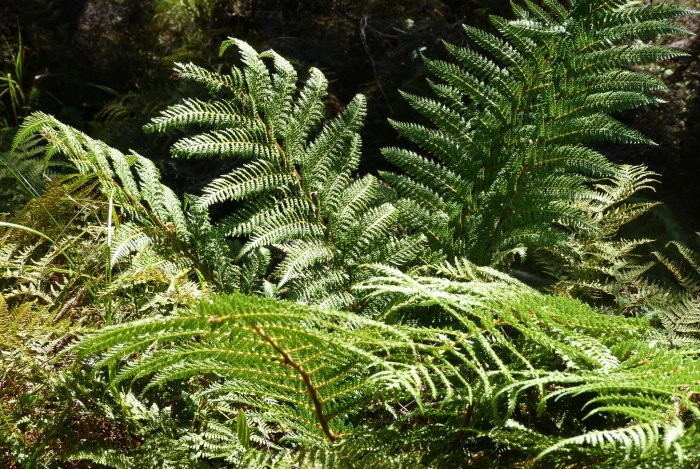Golden Tree Fern
(Dicksonia fibrosa)
Golden Tree Fern (Dicksonia fibrosa)
/
/

Colin Meurk
CC BY-SA 4.0
Image By:
Colin Meurk
Recorded By:
Copyright:
CC BY-SA 4.0
Copyright Notice:
Photo by: Colin Meurk | License Type: CC BY-SA 4.0 | License URL: http://creativecommons.org/licenses/by-sa/4.0/ | Rights Holder: Colin Meurk | Publisher: iNaturalist | Date Created: 2016-02-14T15:58:03-08:00 |
























Estimated Native Range
Climate Requirements for Calgary, Canada
| This Plant | Your Site | Plant Suitability for Your Location | ||
|---|---|---|---|---|
| • Precipitation | 23" - 170" | 17" | Your precipitation may be insufficient for this plant. Irrigate N" / year. | Irrigate N" / year |
| • High Temp. | 61°F - 90°F | 76°F | Your summer temperatures are normal for this plant. | Excellent |
| • Low Temp. | 20°F - 46°F | 5°F | Your winter temperatures may be too cold for this plant | Too cold |
This plant should grow well at your location with about N inches per year (Y minutes per month) of irrigation.
Summary
Dicksonia fibrosa, commonly known as the golden tree fern, whekī-ponga, or kuripaka, is a medium-sized, slow-growing tree fern native to the moist forests and lower montane regions of New Zealand. It can reach up to 20 feet in height and features a thick, fibrous trunk topped with a crown of arching, dark green fronds that can span several feet in length. The base of the trunk is often adorned with a distinctive pale brown skirt of dead fronds, which provides habitat for epiphytes and invertebrates. The golden tree fern thrives in moist, shaded environments and requires protection from frost in cooler climates.
The golden tree fern is valued for its lush, prehistoric appearance and is often used in shaded garden settings, such as woodland gardens or as a focal point in ferneries. It prefers consistently moist, well-drained soil and can tolerate a range of light conditions from partial shade to full shade. While it is relatively low-maintenance, it does require adequate moisture and protection from strong winds. In cultivation, it has gained the Royal Horticultural Society’s Award of Garden Merit, indicating its exceptional performance in gardens. Potential problems include sensitivity to frost and vulnerability to pests such as scale insects and mealybugs.CC BY-SA 4.0
The golden tree fern is valued for its lush, prehistoric appearance and is often used in shaded garden settings, such as woodland gardens or as a focal point in ferneries. It prefers consistently moist, well-drained soil and can tolerate a range of light conditions from partial shade to full shade. While it is relatively low-maintenance, it does require adequate moisture and protection from strong winds. In cultivation, it has gained the Royal Horticultural Society’s Award of Garden Merit, indicating its exceptional performance in gardens. Potential problems include sensitivity to frost and vulnerability to pests such as scale insects and mealybugs.CC BY-SA 4.0
Plant Description
- Plant Type: Tree, Fern
- Height: 10-20 feet
- Width: 10-14 feet
- Growth Rate: Slow
- Flower Color: N/A
- Flowering Season: Non-Flowering
- Leaf Retention: Evergreen
Growth Requirements
- Sun: Part Shade, Full Shade
- Water: Medium
- Drainage: Medium
Common Uses
Border Plant, Low Maintenance, Potted Plant
Natural Habitat
Moist forests and lower montane regions of New Zealand
Other Names
Common Names: Wheki-ponga, Woolly Tree Fern
Scientific Names: Dicksonia fibrosa, Balantium fibrosum, Dicksonia antarctica, Dicksonia antarctica var. fibrosa, Dicksonia fibrosa var. microcarpa, Dicksonia intermedia, Dicksonia intermedia, Dicksonia microcarpa, Dicksonia sparmanniana
GBIF Accepted Name: Dicksonia fibrosa